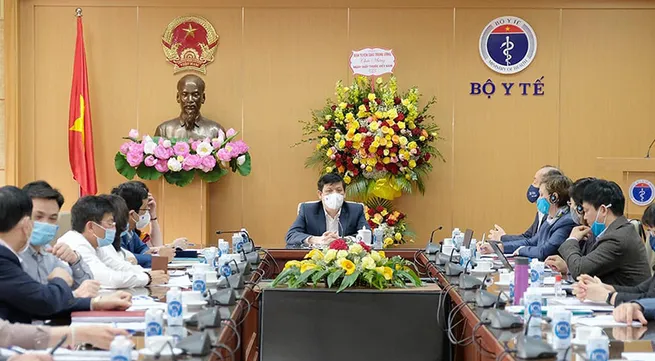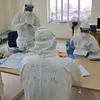Vietnam works to ensure equal access to COVID-19 vaccines

The meeting took place after the first batch of COVID-19 vaccines, jointly produced by the AstraZeneca pharmaceutical company and the UK’s Oxford University, arrived in Vietnam on February 24.
Health Minister Nguyen Thanh Long expressed his thanks for the efforts by the COVAX Facility programme to help Vietnam secure the vaccines.
Vietnam wishes to get quality vaccines at suitable prices, matching the country’s storage capacity, he said, pledging that his ministry will promptly deal with procedural issues to facilitate the delivery of COVID-19 vaccines under the COVAX Facility programme.
The ministry has assigned the relevant agencies to put forth communication plans for the vaccination.
Representatives from the international organisations agreed on the need to mobilise the involvement of different economic sectors in the storage of vaccines like Pfizer that must be kept at minus 70 degree Celsius and can only be refrigerated for five days.
This has been the biggest vaccination campaign in Vietnam so far, with more than 100 million doses needed, Minister Long said, adding that the ministry has promptly charted all scenarios and mobilised the participation of all units both inside and outside the medical sector in this campaign.
The participants also stressed the significance of supervising and assessing the body’s reactions to the vaccine.
A plane carrying the first batch of 117,600 doses of the COVID-19 vaccine landed at Tan Son Nhat airport, Ho Chi Minh City, on February 24.
Deputy Health Minister Truong Quoc Cuong highlighted the significance of the vaccine delivery at a time when the COVID-19 pandemic is erupting in Hai Duong, Hai Phong and Quang Ninh.
With the delivery, Vietnam has become one of the first countries in Asia to access a the vaccine.
Result from clinical trials showed that 22 days after the first shot, the AstraZeneca vaccine can fully protect people from serious illness, hospitalisation and death caused by the novel coronavirus. Within 90 days, the vaccine’s potency could reach 76%.
Analysis has shown that the vaccine can reduce the risk of infection by two thirds for cases without symptoms.





